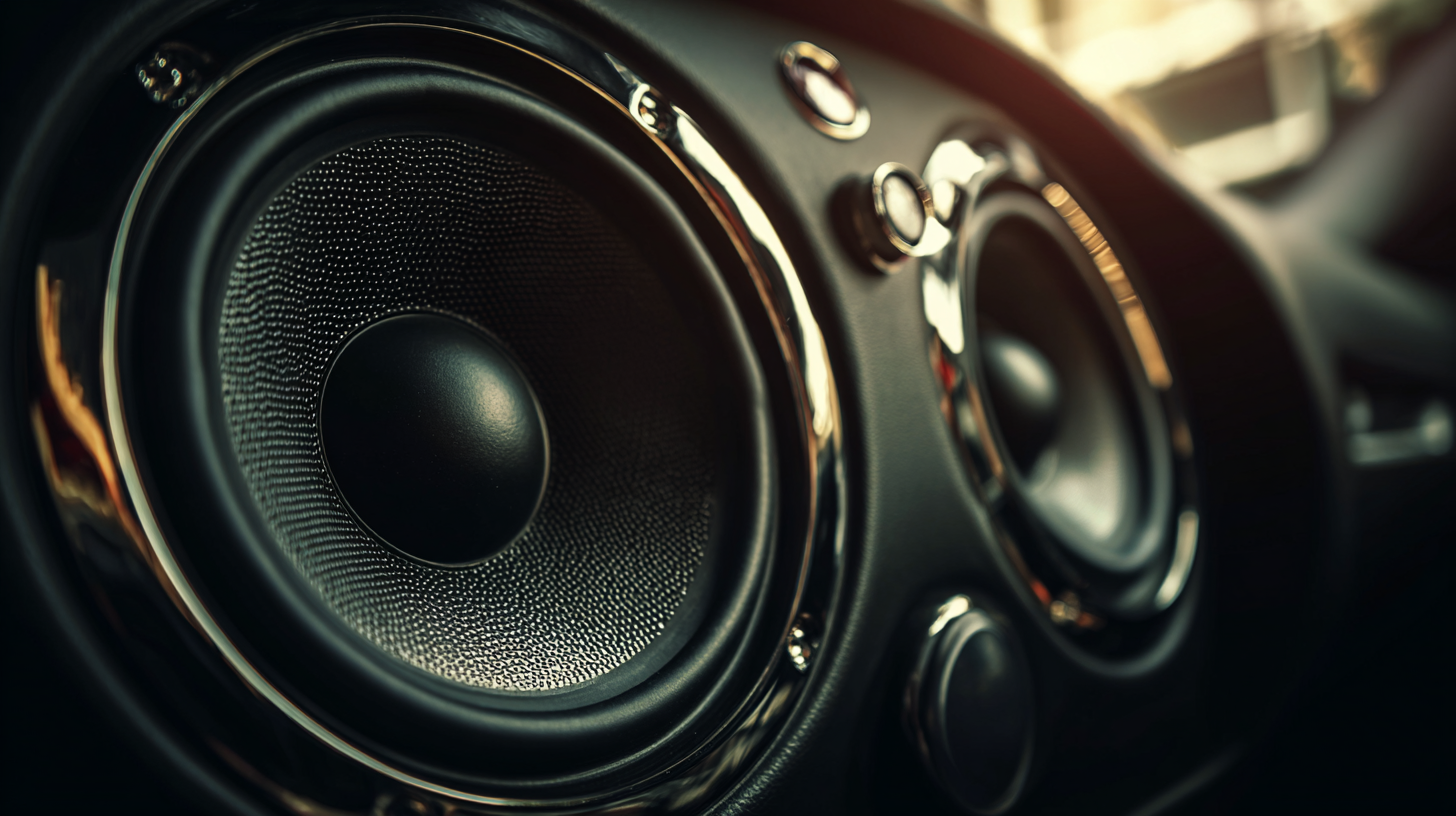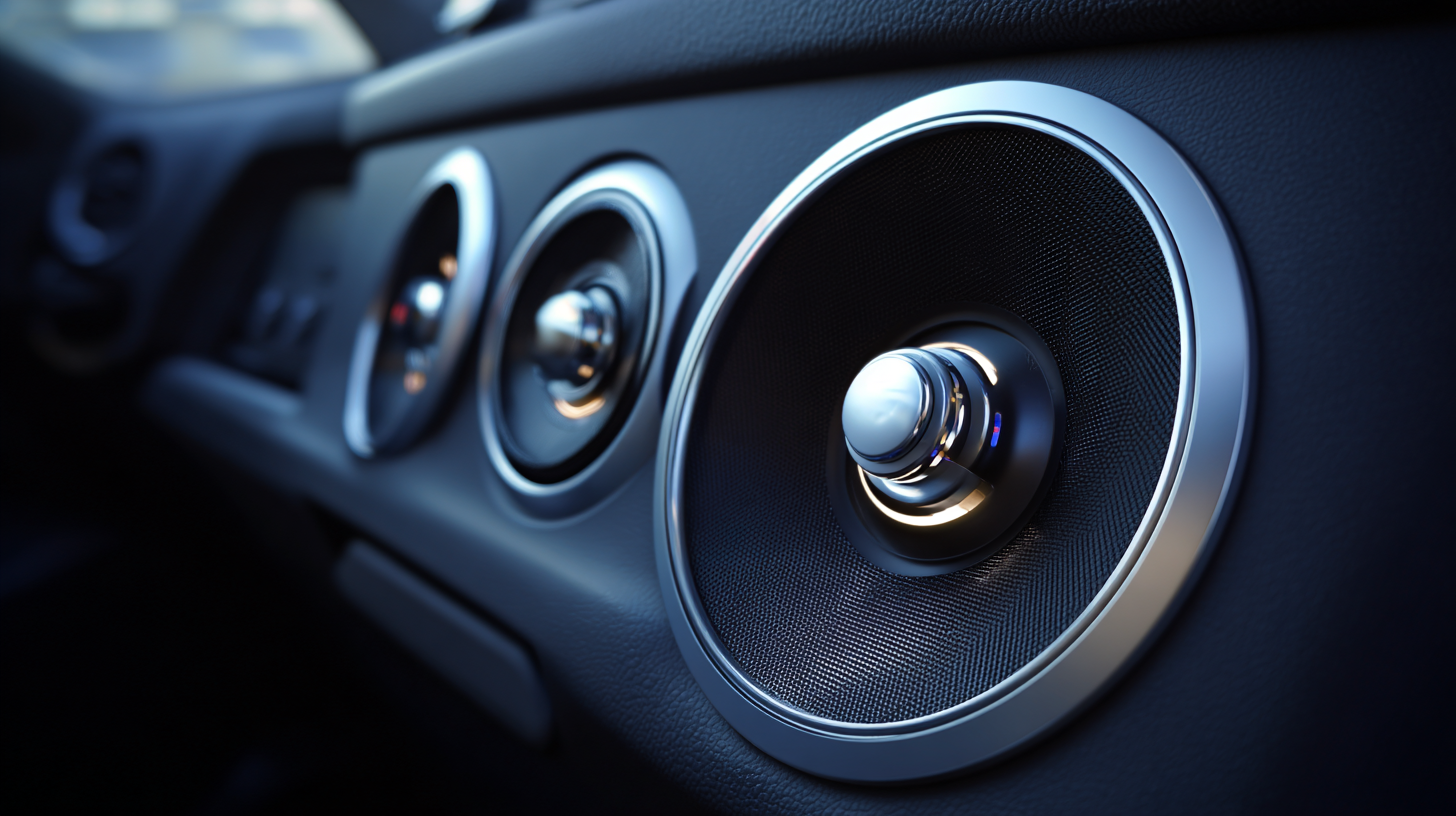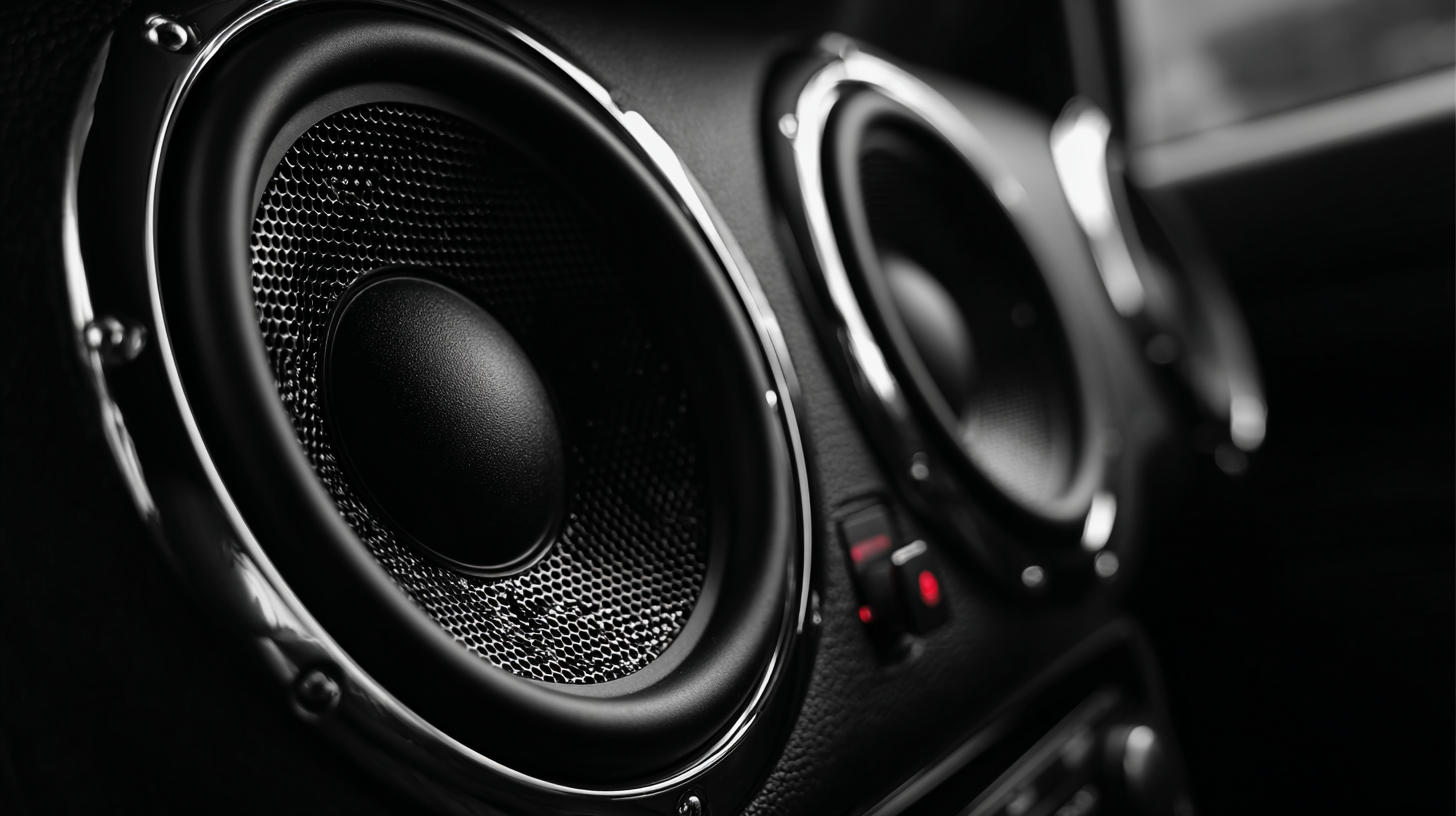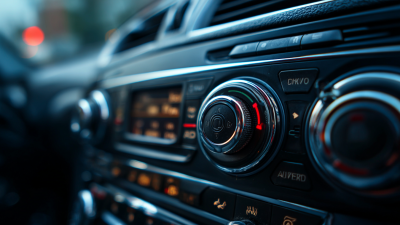How to Choose the Best Car Component Speakers for Exceptional Sound Quality
When it comes to enhancing the auditory experience in your vehicle, selecting high-quality car component speakers is crucial. According to a recent market research report by Technavio, the global car audio market is projected to grow by over $1 billion between 2021 and 2025, driven by consumers' increasing demand for superior sound quality.

Car component speakers, known for their ability to deliver clearer and more dynamic sound compared to coaxial speakers, are gaining popularity among audiophiles and casual listeners alike. A well-designed set of component speakers can significantly elevate the audio experience, providing distinct separation of sounds and improving overall clarity.
Understanding the key factors that influence the performance and suitability of car component speakers can help consumers make informed decisions, ensuring they achieve the exceptional sound quality they desire while driving.
Understanding the Importance of Speaker Size in Sound Quality Optimization
When it comes to optimizing sound quality in a car audio system, the size of the speakers plays a crucial role. Generally, larger speakers are capable of producing deeper bass and fuller sound, making them ideal for those who crave rich audio experiences. For instance, 6.5-inch or 8-inch midrange speakers can provide a substantial improvement in sound depth and clarity compared to smaller 4-inch models. This increase in size allows for more air movement, which translates to better sound reproduction across a wider frequency range.
However, the importance of speaker size goes beyond just bass response. It also influences the balance and overall sound signature of the system. Smaller speakers may struggle to handle lower frequencies effectively, leading to a thin or hollow sound. On the other hand, properly sized components can ensure that high, mid, and low frequencies blend seamlessly, creating a cohesive audio experience. Additionally, considering the available space in the vehicle can guide the selection process, as the right size must also fit well within the installation location without compromising aesthetics or functionality.
Analyzing Speaker Sensitivity Ratings for Enhanced Audio Performance
When selecting car component speakers, understanding speaker sensitivity ratings is crucial for enhancing audio performance.
Sensitivity, measured in decibels (dB), indicates how efficiently a speaker converts power into sound.
A higher sensitivity rating typically means that the speaker will produce louder sound with the same input power,
which is particularly beneficial in automotive environments where ambient noise can interfere with audio clarity.
For instance, speakers with sensitivity ratings above 90 dB are often recommended for best performance,
as they effectively translate power into vibrant sound without requiring excessive amplifier power.
Recent market analyses indicate a growing emphasis on speaker technology and performance metrics, with consumer preferences shifting towards products that deliver superior audio experiences.
The consumer audio market is projected to expand significantly, with increasing demand for high-quality speaker systems as car manufacturers integrate advanced sound systems into their vehicles.
This trend showcases the importance of evaluating not just the aesthetic appeal of speakers, but also their technical specifications like sensitivity ratings,
which directly affect sound quality and overall listening experience. Enhanced understanding of these metrics can empower consumers to make informed choices
that align with their audio preferences and driving conditions.
The Role of Frequency Response in Achieving Richer Sound Experiences
When selecting car component speakers, understanding the role of frequency response is crucial for achieving exceptional sound quality. Frequency response refers to the range of frequencies that a speaker can reproduce, typically measured in Hertz (Hz). For a truly immersive audio experience, look for speakers with a broad frequency response range, ideally from 20 Hz to 20 kHz. This range encompasses the full spectrum of audible sound, from deep bass notes to crisp treble highs, allowing for a richer sound experience.
Research from the Consumer Technology Association highlights that speakers with a wider frequency response not only improve clarity and detail but also enhance the overall listening experience. For example, a study revealed that listeners rated speakers with a frequency response of 50 Hz to 20 kHz significantly higher in sound quality compared to those with narrower ranges. Furthermore, it’s important to consider not just the range but also the flatness of the frequency response curve; the less variation in amplitude across the range, the more natural and balanced the sound will be. Investing in speakers that meet these criteria can dramatically elevate your in-car audio enjoyment.
Material Choices in Speaker Construction: Impact on Sound Clarity
When selecting car component speakers for exceptional sound quality, the materials used in their construction play a crucial role in determining sound clarity. High-quality drivers are often made from materials like butyl rubber for surrounds, which provides durability and flexibility, allowing for better low-frequency response. Additionally, the cone material significantly influences sound reproduction; options like polypropylene and woven fabric can enhance both mid and high-frequency clarity. A well-balanced composition of these materials can lead to a more immersive listening experience, avoiding distortion even at higher volumes.
Tweeters, which handle the high-frequency sounds, also benefit from carefully chosen materials. Silk or cloth domes deliver smooth highs, while metal or ceramic options can produce a brighter sound. The choice between these materials often depends on personal preferences and the acoustic characteristics of the vehicle interior. Ultimately, understanding the impact of material choices in speaker construction can guide enthusiasts toward selecting components that not only fit their aesthetic preferences but also elevate the auditory experience to a new level of clarity and detail.

Comparative Analysis of Component Speakers vs. Full-Range Speakers for Audiophile Preferences
When it comes to enhancing audio quality in your vehicle, the choice between component speakers and full-range speakers can significantly influence your listening experience. Component speakers typically consist of separate drivers for highs, mids, and lows, allowing for superior soundstage and clarity. According to a recent industry report, component systems can deliver up to 30% better sound quality compared to full-range options. This makes them a preferred choice for audiophiles who seek precision in sound reproduction and a more immersive listening environment.
On the other hand, full-range speakers offer a more straightforward installation and are often favored for their compactness and ease of use. While they provide decent sound quality, they may not deliver the nuanced audio that component speakers achieve. A comparative study revealed that choosing component speakers can lead to a significant improvement in audio dynamic range, particularly in genres that rely heavily on intricate sound layers, such as classical and jazz. For those who are serious about sound quality, investing in a quality component speaker system is recommended to fully appreciate the subtleties in your favorite tracks.

Related Posts
-

Ultimate Checklist for Choosing the Best Car Speakers for Your Sound System
-

Top Strategies for Enhancing Your Car Audio Experience with High-Quality Audio Systems
-

Discover the Advantages of Upgrading to Component Speakers for Your Sound System
-

8 Essential Tips for Elevating Your Car Audio Experience
-

How to Choose the Perfect Vehicle Audio System for Your Road Adventures
-

How to Choose the Perfect Car Audio System for Your Vehicle
